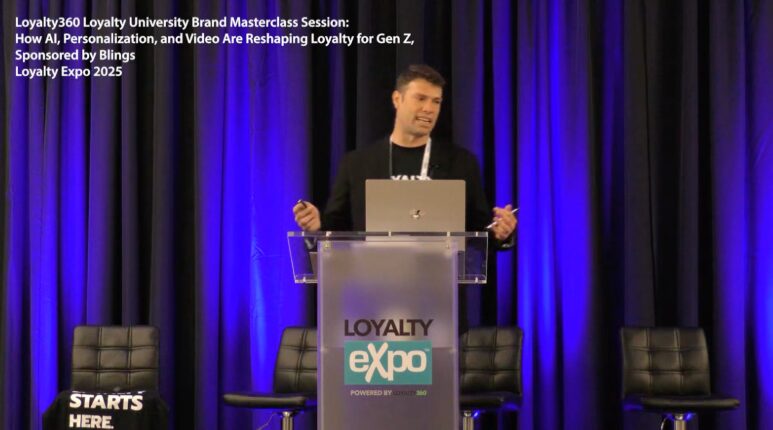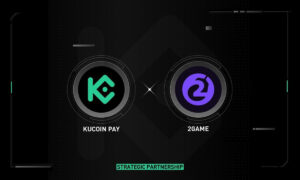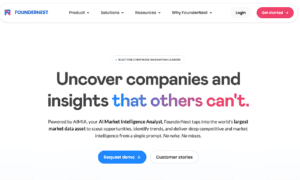When Yosef Peterseil, COO of Blings, took the stage at the Loyalty360 Expo, his message wasn’t just about video; it was about attention. More specifically, how little of it Gen Z is willing to give you. “Millennials have a 12-second attention span. Gen Z? Eight seconds. A goldfish has nine. And 95% of teens have smartphones,” Peterseil told the audience. “You are in trouble.”
This urgency isn’t an exaggeration. The marketing industry has long relied on static text and generic emails to drive loyalty, but that playbook no longer works. Gen Z, raised on TikTok, Netflix, and YouTube, doesn’t click on links. They swipe, tap, scroll, and skip. They demand personalization, visual storytelling, and instantaneous response.
Blings is betting on the future of customer loyalty by meeting those demands with a new kind of personalized, interactive video infrastructure. And judging by their results, they may be right.
Why Interactivity Builds Loyalty
At the conference, Peterseil emphasized how interactivity is not just transforming loyalty, but making it a playful experience. “You want to get people engaged. Get them to create their own content in different ways,” he said. For Gen Z, subject lines aren’t just headers but entry points. Emojis, white space, and brand recognition all contribute to a message’s performance. Blings encourages brands to lean into that, combining clever subject lines with short, punchy video content that feels more like a game than a loyalty program. This is not just a new approach, it’s an exciting one.
User-generated content (UGC) is particularly potent. “We had a 53% share rate from that, where the average benchmark is 2-5%,” Peterseil explained, referencing a Blings campaign with Habit Burger. That referral program was powered by interactive video and outperformed traditional benchmarks. It became a standout case for how Gen Z responds when content is created for and by them.
VIP Experiences that Actually Show Up
Blings’ partnership with Live Nation’s VIP Nation provides another compelling proof point. The team transformed dry, text-heavy itineraries for artists like Meghan Trainor and Enrique Iglesias into immersive, interactive videos. These weren’t just watch-and-forget assets. They drove action.
According to VIP Nation’s Evan Abrams, the new video-based itineraries helped cut no-show rates by 20%, generated an average watch time of 98 seconds, and achieved a 15% share rate on social media. After all, people don’t like to read. The Blings’ approach was a way for VIP guests to consume the information they needed for their VIP experience at the concert. It’s a stark reminder that if you want engagement, you must create content worth engaging with.
The MP5 Format: Infrastructure for Scale
Blings’ real innovation lies under the hood. Most personalized video platforms require you to send your data to a third-party vendor, which renders thousands of videos, a process that can be expensive, slow, and privacy-risky. Peterseil offered a striking contrast: “With our MP5 format, we generate the video on the user’s device in real-time. It’s coded in HTML. That means we can create unlimited videos in milliseconds, with zero rendering costs and full data security.”
This patented technology is backed by proof. For Wyndham Hotels, Blings generated 120 million personalized videos instantly with no risk to customer data and no performance lag. Each video was just 100 kilobytes, light enough to load instantly on mobile without sacrificing fidelity. This architectural shift enables video personalization to be scalable, secure, and cost-effective.
The Real Power of Zero-Party Data
Another major theme of Peterseil’s talk was zero-party data, the information customers willingly share when given the right incentives. Take quizzes, for example. “Sephora’s skincare routine builder asks about skin type, tone, and goals, then provides tailored recommendations,” Peterseil said. “They’re giving an experience and getting data in return.”
That exchange is important. Coveo reports that Gen Z (60%) and Millennials (62%) are more willing to share personal data when they’re receiving something valuable in return, compared to 53% of overall consumers. Other factors also come into play, such as obtaining better deals or offers, whether they trust the brand, and whether it enhances their personalized experience.
The Current further supports this. Seventy-four percent of respondents say they are willing to share personal information with brands and retailers, with only 58% willing to do so if it meant providing only an email address. The top reasons include coupons or deals available (33%), product price (30%), free product resources (22%), and access to exclusive perks (18%).
Sephora’s model demonstrates how quizzes, polls, and interactive experiences can simultaneously fuel engagement and data acquisition. And with Blings’ video-based platform, that data feeds directly into future content personalization, building a real feedback loop between brand and customer.
Not Just Better But Necessary
What Peterseril argued at Loyalty360 wasn’t just that interactive video is “better” than static email. It’s that for Gen Z, and increasingly for Millennials, it’s necessary. “Nobody’s actually going into an email and scrolling and saying, ‘I can’t wait for them to send me another incredible email,’” he said. “Because people are in a world of video. And that’s essentially where Blings comes in.”
With shrinking attention spans, rising expectations, and a flood of content competing for eyeballs, brands must meet users where they are. It isn’t just about what device they’re using but also their behaviors, preferences, and eight-second windows of attention.
Blings isn’t trying to change the way people engage with content. They’re just catching up to how people already are.



































